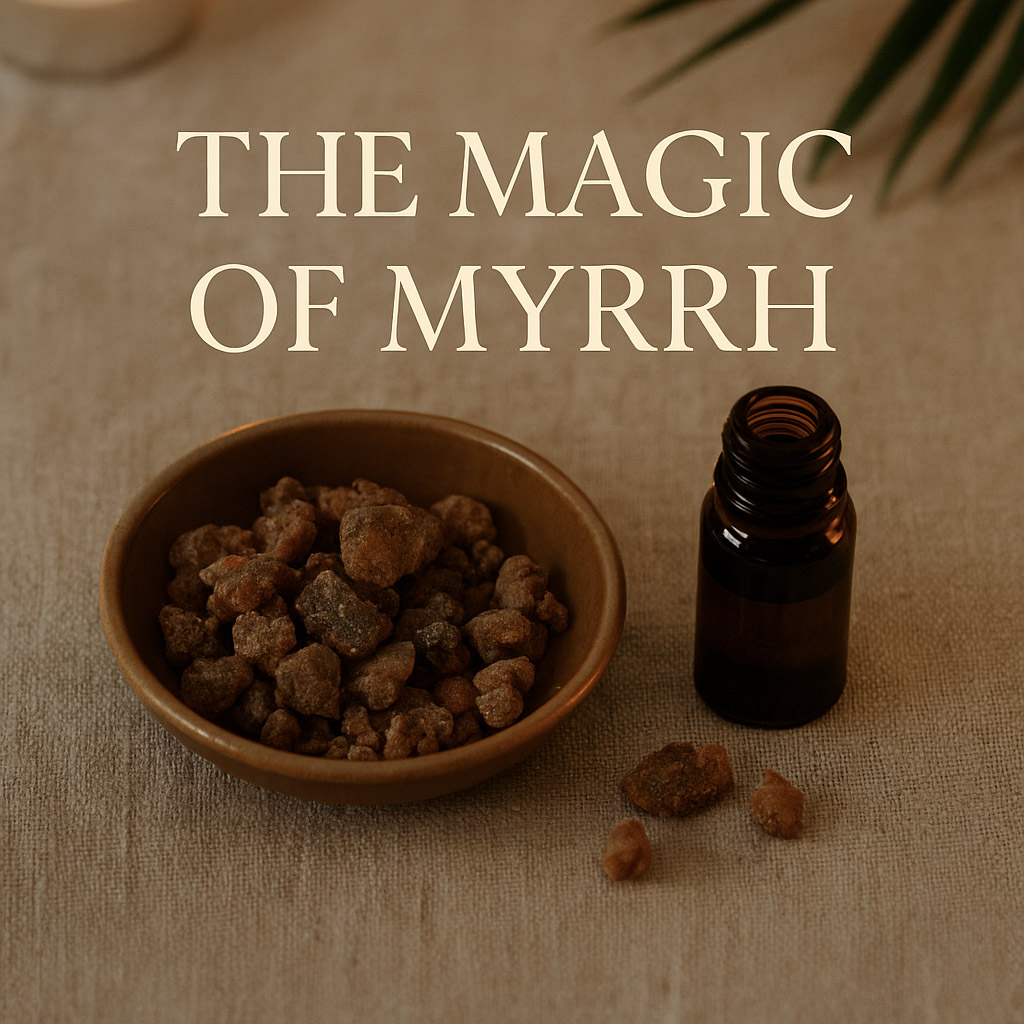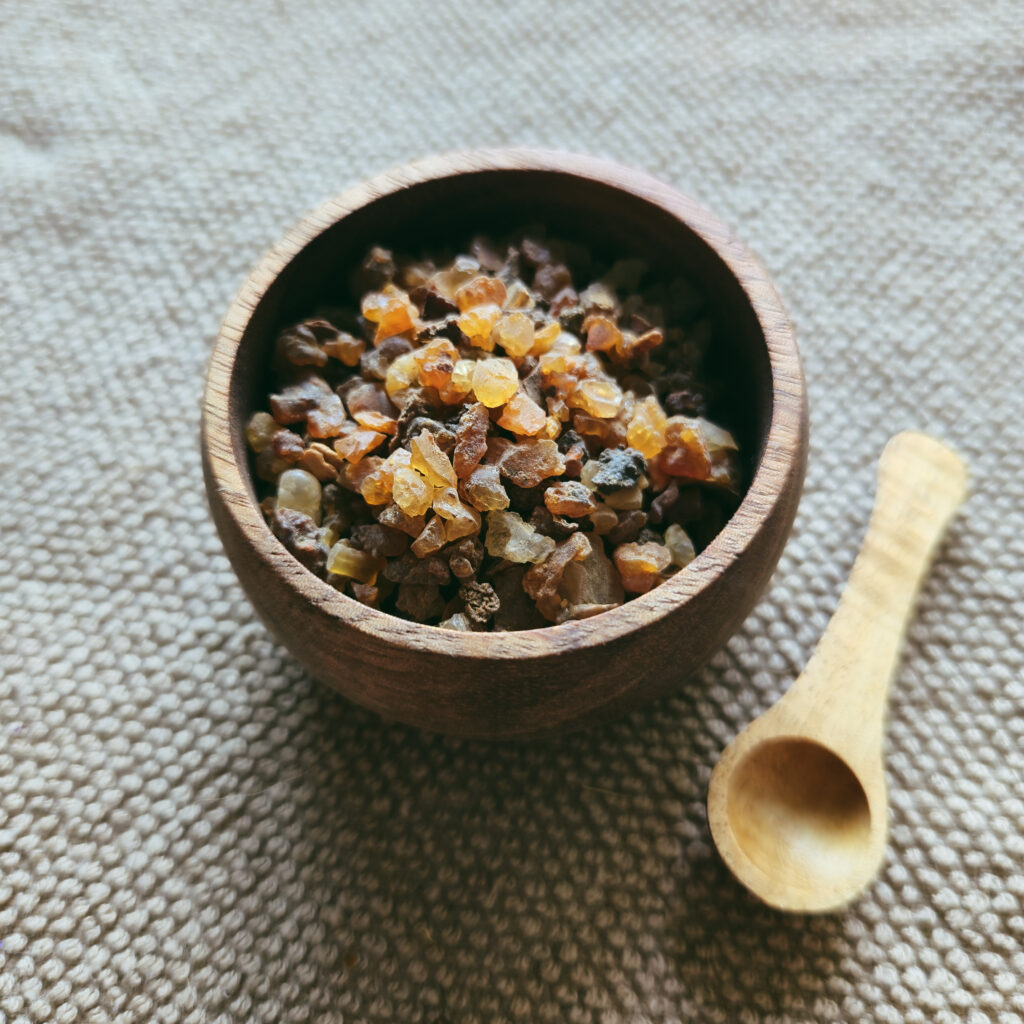
Ingredient spotlight: Myrrh

Could the first spotlight be anything other than myrrh?
At House of Myrrh and Magic, the name is more than poetic. It’s a tribute to one of the most cherished substances in the ancient world: myrrh.
Myrrh, a resin from the Commiphora tree, has been used for over 5,000 years across the Nile Valley and beyond. In ancient Egypt, it held a place of honour not just in temples and tombs, but in daily life. It was burned as incense, used in perfumes, embalming rituals, and medicinal treatments. Its Egyptian name, “antiu”, appears frequently in temple texts and medical papyri.
Pharaohs were anointed with oils containing myrrh during sacred rites. High priests blended it into the incense burned in offerings to the gods. Women applied it in fragrant salves, and embalmers used it to preserve the dead. They believed its scent pleased the divine and warded off decay.
Unlike modern wellness trends that make unverified claims, I focus on documented (ritual) use. Myrrh was described in the Ebers Papyrus (ca. 1550 BCE) for treating wounds and inflammation, and it was one of the core ingredients in kyphi, the sacred temple incense linked to healing and dreams. I am so excited to start exploring this ingredient!